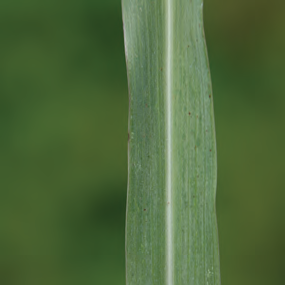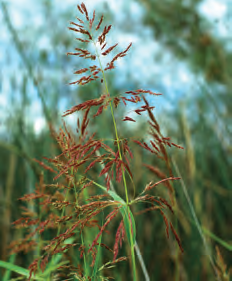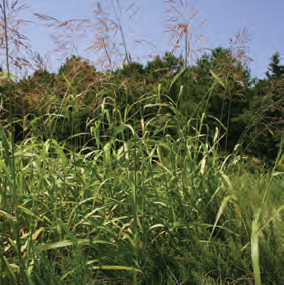Johnson Grass
Sorghum halepense
Grass Family (Poaceae)
Annual Grass
Flowers: Aug–Sep
Native Range: Mediterranean Europe, North Africa
Introduction: 1830s and 1840s in South Carolina and Alabama for forage
.Mid-Atlantic Range & Habitats: Wet to moist soils in open disturbed habitats, including ditch banks, roadsides, and old fields, throughout the region, but more widespread southward.


Johnson Grass is considered one of the most problematic invasive plants in the world. Its massive rhizome system allows it to compete for nutrients, while the size of the plant itself (up to 3 m high) shades surrounding vegetation. Chemicals produced by the plant inhibit germination of other vegetation. Even though the rhizomes are typically killed by cold winter temperatures, recently evolved cold-resistant ecotypes and prolific seed production have allowed the species to spread northward in our region.

Quick ID
- Leaf width: Leaves 1–2 cm wide, with a prominent white midvein
- Fruit bract: Most fruits covered in short, fine, silky hairs
More ID Tips
Johnson grass and Indian Grass are both large, rhizomatous grasses that can reach heights of two meters. Johnson Grass is colonial from long, thick rhizomes, whereas Indian Grass grows in loose tufts from short rhizomes. The inflorescences of Johnson Grass are open and narrowly pyramidal, typically with a reddish tinge, while those of Indian Grass aremore compact and typically golden in color.


